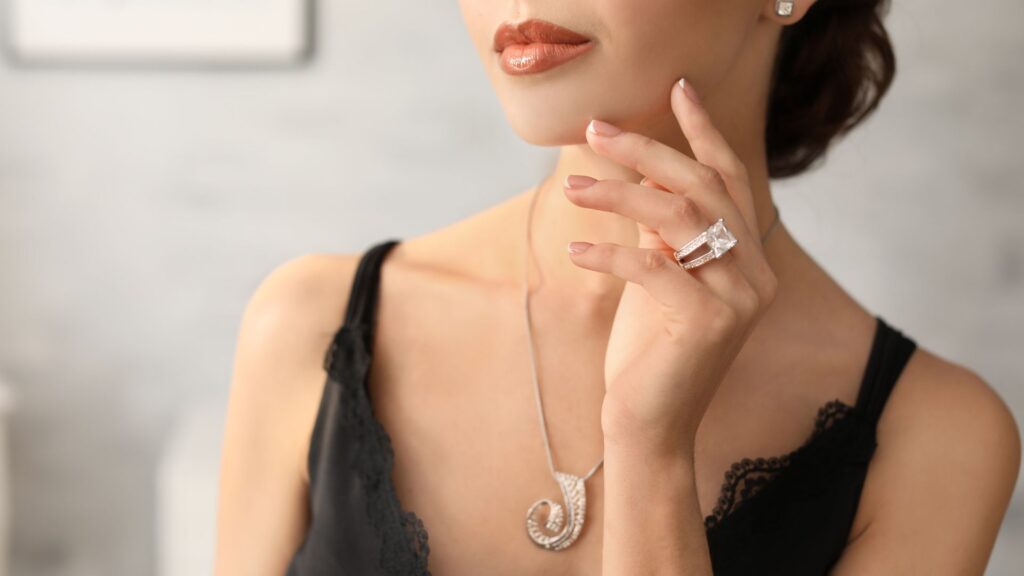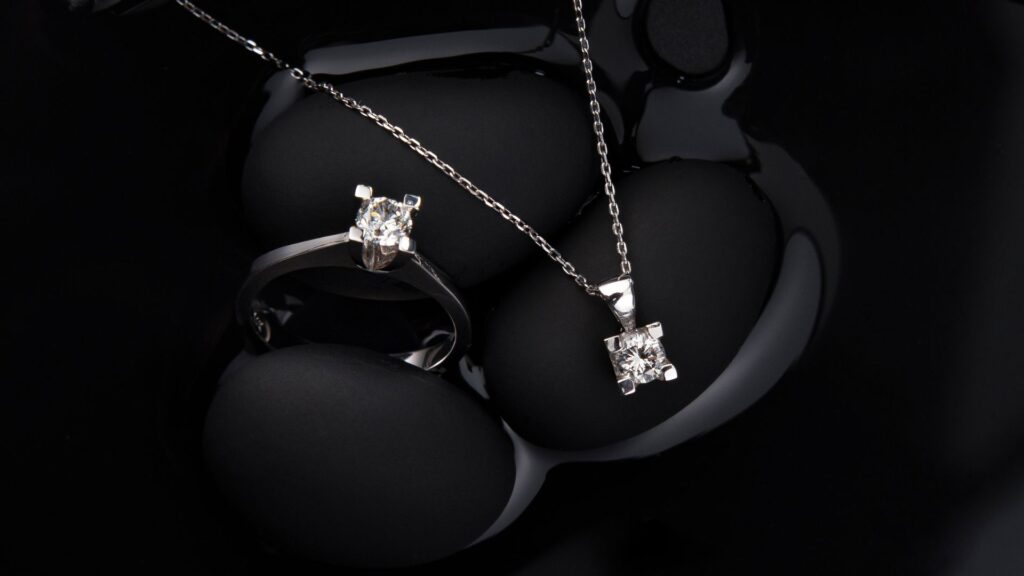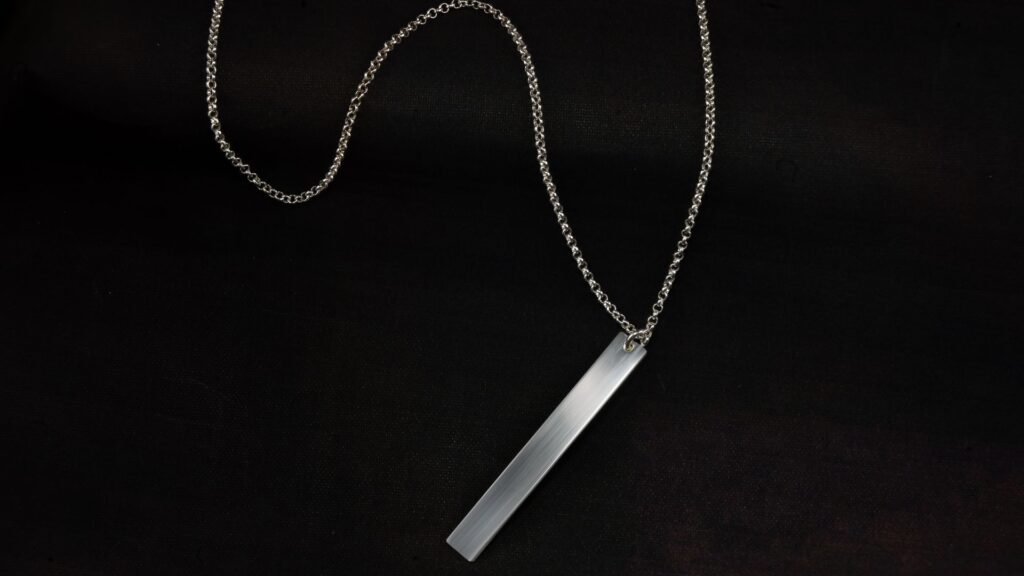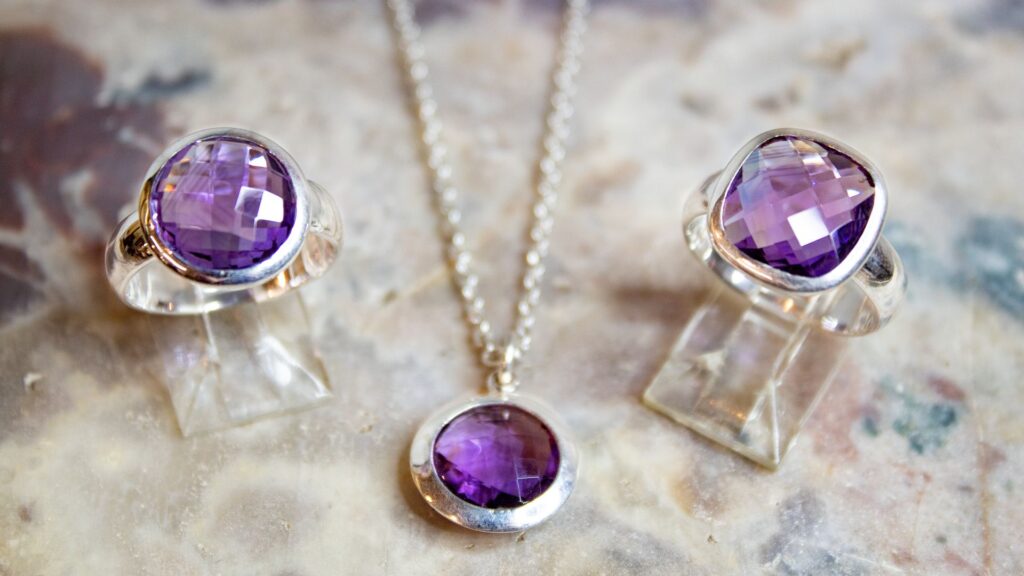Introduction
silver necklace have long been cherished as timeless pieces of jewelry that embody elegance, sophistication, and versatility. From ancient civilizations to modern fashion, silver necklace have played a significant role in enhancing personal style and making a statement. In this article, we will delve into the world of silver necklace, exploring their history, different types, how to choose the perfect piece, and tips for maintaining their beauty. Whether you’re a jewelry enthusiast or someone looking to add a touch of elegance to your collection, this guide will help you discover the timeless beauty of exquisite silver necklace.

1. The Rich History of Silver Necklace
Silver has been used in jewelry for thousands of years, with its origins dating back to ancient civilizations. The ancient Egyptians, Greeks, and Romans all recognized the value and beauty of silver, often crafting intricate necklaces and other adornments. In many cultures, silver was considered a symbol of wealth and status, and it was often used in religious and ceremonial contexts.
During the Renaissance, silver necklaces became even more popular in Europe, with artisans creating elaborate designs that were worn by royalty and the elite. The Industrial Revolution brought about new techniques in silver production, making it more accessible to the general public. Today, silver necklaces continue to be a staple in the world of jewelry, appreciated for their timeless appeal and affordability.
2. Understanding the Types of Silver Used in Necklaces
When it comes to silver necklace, not all silver is created equal. There are several types of silver used in jewelry making, each with its unique characteristics.
Sterling Silver
Sterling silver is the most common type used in necklaces. It is composed of 92.5% pure silver and 7.5% other metals, usually copper. The addition of copper enhances the durability of the silver while maintaining its beautiful luster. Sterling silver is highly valued for its quality and is often stamped with a “925” mark to indicate its composition.
Fine Silver
Fine silver is 99.9% pure silver, making it softer and more prone to scratches and bending than sterling silver. While it has a higher silver content, it is less commonly used in necklaces due to its delicate nature.
Argentium Silver
Argentium silver is a modern type of silver alloy that contains a higher percentage of pure silver than sterling silver, along with germanium. This composition makes it more resistant to tarnish and more durable, making it a popular choice for silver necklaces.
Silver-Plated
Silver-plated necklaces are made by coating a base metal, such as copper or brass, with a thin layer of silver. While more affordable, silver-plated necklaces do not have the same longevity or value as solid silver pieces.
3. Popular Styles of Silver Necklaces
Silver necklaces come in a variety of styles, each offering its unique charm and appeal. Here are some popular styles to consider:
Chain Necklaces
Chain necklaces are a versatile and timeless option that can be worn alone or paired with pendants. The design of the chain itself can vary, with options like cable, rope, box, and snake chains, each offering a distinct look.
Pendant Necklaces
Pendant necklaces feature a decorative element, such as a charm or gemstone, suspended from a chain. The pendant adds a focal point to the necklace, allowing for personal expression and style.
Choker Necklaces
Choker necklaces sit snugly around the neck and have seen a resurgence in popularity in recent years. They can be simple and understated or adorned with intricate details for a more dramatic effect.
Lariat Necklaces
Lariat necklaces are a unique style that doesn’t have a clasp. Instead, they feature an open-ended design that can be looped or tied in various ways, offering a customizable and elegant look.
Statement Necklaces
Statement necklaces are bold and eye-catching, often featuring large, intricate designs that draw attention. These necklaces are perfect for special occasions or when you want to make a strong style statement.
4. Choosing the Perfect Silver Necklace
Selecting the perfect silver necklace involves considering several factors, including your personal style, the occasion, and the necklace’s length and design.
Consider Your Style
Think about your wardrobe and personal style when choosing a silver necklace. If you prefer classic and timeless pieces, a simple chain or pendant necklace may be ideal. For those who like to make a statement, a bold and intricate design may be more fitting.
Occasion Matters
Consider the occasion for which you’re purchasing the necklace. A delicate and elegant necklace may be perfect for everyday wear, while a more elaborate design may be better suited for special events.
Necklace Length
The length of the necklace can greatly impact its appearance and how it complements your outfit. Shorter necklaces, like chokers and collar necklaces, draw attention to the neck and collarbone, while longer necklaces can elongate the neckline and add a touch of sophistication.
Quality and Craftsmanship
When investing in a silver necklace, pay attention to the quality and craftsmanship. Look for necklaces that are well-made, with secure clasps and smooth finishes. Sterling silver is often the best choice for both beauty and durability.

5. The Symbolism and Meaning Behind Silver Necklaces
Silver necklaces often carry deep symbolism and meaning, making them more than just a piece of jewelry. Throughout history, silver has been associated with purity, clarity, and protection. Many cultures believe that silver has healing properties and can ward off negative energy.
In modern times, silver necklaces are often given as gifts to symbolize love, friendship, and commitment. The type of pendant or charm on the necklace can also carry specific meanings, such as a heart symbolizing love, a cross representing faith, or a key symbolizing new beginnings.
6. How to Care for Your Silver Necklace
Proper care is essential to maintaining the beauty and longevity of your silver necklace. Here are some tips to help you keep your necklace looking its best:
Regular Cleaning
Silver can tarnish over time, so it’s important to clean your necklace regularly. Use a soft cloth to gently polish the silver and remove any tarnish. For more stubborn tarnish, you can use a silver cleaning solution or a mixture of baking soda and water.
Proper Storage
Store your silver necklace in a cool, dry place, away from direct sunlight. Keeping it in a jewelry box or a soft pouch can help prevent scratches and tarnish. Avoid storing silver with other metals, as this can cause it to tarnish more quickly.
Avoiding Chemicals
Chemicals found in household cleaners, cosmetics, and even some foods can cause silver to tarnish. It’s best to remove your necklace before applying makeup, using cleaning products, or swimming in chlorinated water.
Wearing It Often
One of the best ways to prevent tarnish is to wear your silver necklace often. The natural oils in your skin can help keep the silver polished and shiny.
7. Silver Necklaces as a Fashion Statement
Silver necklaces are incredibly versatile, making them a popular choice for fashion-forward individuals. They can be worn with casual outfits for a touch of elegance or paired with formal attire for a sophisticated look. The reflective nature of silver adds a subtle shine that complements a wide range of colors and styles.
Layering silver necklaces has become a popular trend, allowing you to create a unique and personalized look. Mixing different lengths, styles, and even metals can add depth and interest to your outfit. Whether you prefer a minimalist approach or a more eclectic style, silver necklaces offer endless possibilities for self-expression.
8. The Role of Silver Necklaces in Different Cultures
Silver necklaces hold cultural significance in many parts of the world. In India, for example, silver jewelry is often worn during festivals and weddings, symbolizing prosperity and good fortune. In Native American culture, silver necklaces are often adorned with turquoise and other gemstones, representing the connection between the wearer and the earth.
In many African cultures, silver necklaces are used in ceremonies and rituals, often passed down through generations as heirlooms. The craftsmanship and designs of these necklaces are deeply rooted in tradition, making them not only beautiful but also meaningful.

9. Custom Silver Necklaces: A Unique Personal Touch
For those looking to add a personal touch to their jewelry collection, custom silver necklaces offer a unique opportunity. Whether you’re designing a necklace for yourself or as a gift, customization allows you to create something truly special.
Personalized Engravings
Adding an engraving to a silver necklace can make it a cherished keepsake. You can engrave a name, date, or meaningful phrase that holds sentimental value.
Custom Pendants
Designing a custom pendant allows you to choose a symbol or design that resonates with you. Whether it’s a birthstone, a family crest, or a unique shape, a custom pendant adds a personal touch to your silver necklace.
Handcrafted Pieces
Working with a skilled artisan to create a handcrafted silver necklace ensures that your piece is one-of-a-kind. Handcrafted jewelry often features intricate details and superior craftsmanship, making it a valuable addition to any collection.
10. The Ethical and Sustainable Side of Silver Necklaces
As consumers become more conscious of the impact their purchases have on the environment and society, the demand for ethical and sustainable jewelry has grown. When purchasing a silver necklace, it’s important to consider the source of the silver and the practices of the jeweler.
Recycled Silver
Many jewelers now offer necklaces made from recycled silver, reducing the need for new mining and minimizing environmental impact. Recycled silver is just as beautiful and durable as newly mined silver, making it an excellent choice for eco-conscious consumers.
Fair Trade Practices
Fair trade jewelry ensures that the artisans and workers involved in the production process are paid fairly and work in safe conditions. By choosing fair trade silver necklaces, you can support ethical practices and contribute to positive change in the jewelry industry.
11. Silver Necklaces as Meaningful Gifts
Silver necklaces make for thoughtful and meaningful gifts for a variety of occasions. Whether it’s a birthday, anniversary, or a special milestone, a silver necklace can convey love, appreciation, and thoughtfulness.
Birthdays
A silver necklace with a birthstone pendant is a personalized and meaningful gift for a birthday. It shows that you’ve put thought into selecting a piece that reflects the recipient’s personality and birth month.
Anniversaries
Silver necklaces are a traditional gift for significant anniversaries, symbolizing the lasting bond between two people. A custom-engraved pendant or a necklace with a heart charm can add a romantic touch.
Graduations
Marking a graduation with a silver necklace is a timeless way to celebrate this important achievement. A necklace with a key pendant can symbolize new opportunities and the opening of doors in the graduate’s future.
12. Where to Buy Exquisite Silver Necklaces
Finding the perfect silver necklace involves knowing where to shop. There are many options available, from local jewelers to online retailers. Here are some tips for finding high-quality silver necklaces:
Local Jewelers
Visiting a local jeweler allows you to see and feel the necklaces in person, ensuring you’re satisfied with the quality and craftsmanship. Local jewelers often offer unique and handcrafted pieces, and you can also receive personalized service and advice.
Online Retailers
Online shopping offers convenience and a wide selection of silver necklaces from around the world. Be sure to research the retailer, read reviews, and check for certifications of authenticity before making a purchase.
Artisan Markets
Artisan markets and craft fairs are excellent places to find one-of-a-kind silver necklaces. These markets often feature handmade jewelry by local artists, allowing you to purchase a piece with a story and unique design.
Conclusion
Silver necklaces are more than just accessories; they are timeless pieces that carry history, symbolism, and personal meaning. From their rich history to their modern-day significance, necklaces have remained a beloved choice for people of all ages and styles. Whether you’re drawn to the classic simplicity of a sterling silver chain or the bold elegance of a statement necklace, there’s a necklace out there that perfectly reflects your personality and taste. By understanding the different types, styles, and care tips, you can select and maintain a inecklace that will remain a cherished part of your collection for years to come.

FAQs
Q: How do I know if a silver necklace is genuine?
A: Look for a hallmark stamp, such as “925” for sterling silver, on the necklace. This indicates the silver’s purity. Additionally, purchasing from reputable jewelers or retailers can help ensure authenticity.
Q: Can silver necklaces cause skin reactions?
A: Pure silver is hypoallergenic, but some people may have reactions to the metals mixed with silver, such as nickel. If you have sensitive skin, consider choosing sterling silver or Argentium silver, which are less likely to cause reactions.
Q: How often should I clean my silver necklace?
A: It’s recommended to clean your every few months to prevent tarnish. If you wear it daily, you may need to clean it more frequently.
Q: Is it okay to wear my silver necklace in the shower?
A: It’s best to remove your before showering, as exposure to water, soap, and chemicals can cause tarnish and damage over time.
Q: Can I mix silver necklaces with other metals?
A: Absolutely! Mixing silver with other metals, such as gold or rose gold, can create a stylish and unique look. Just be sure to match the style and length for a cohesive appearance.






Leave a Reply